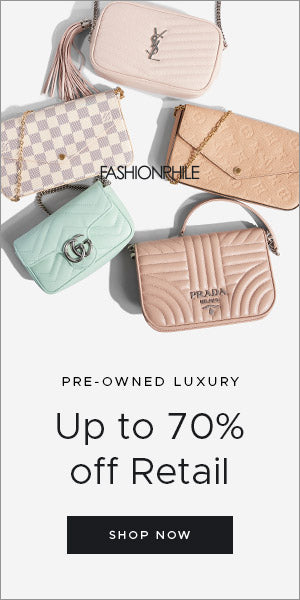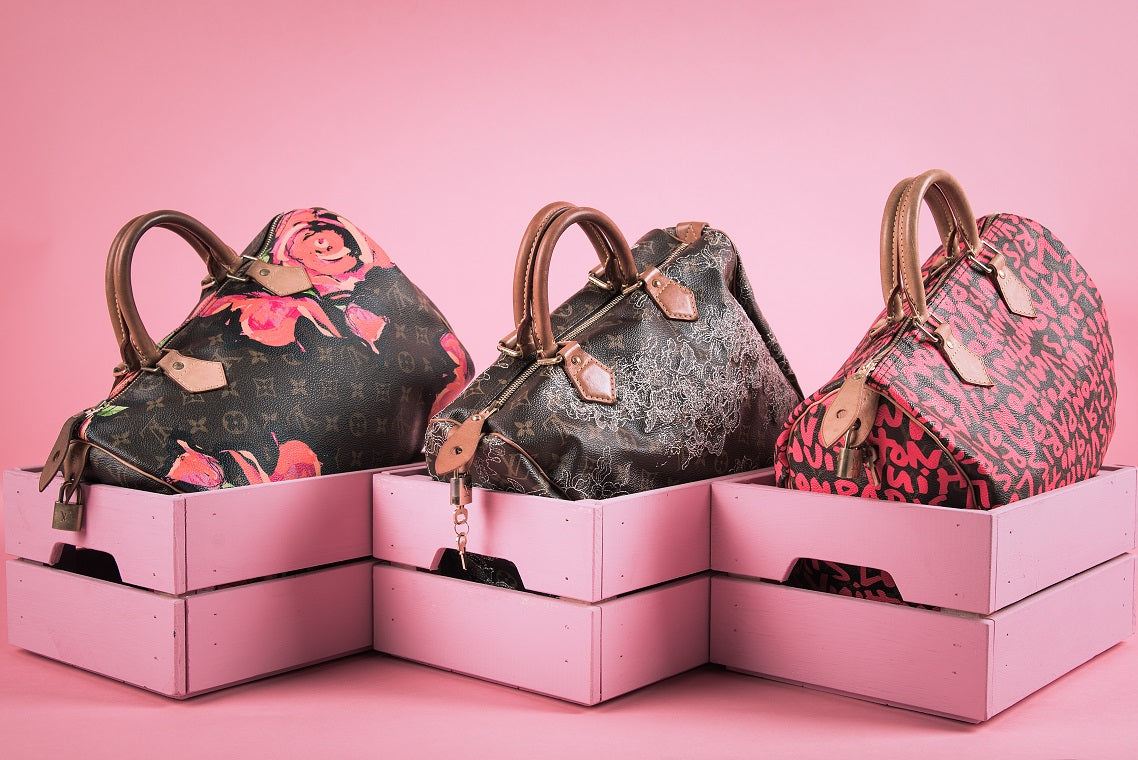
According to a recent research, the secondhand market of high-end goods has grown by 12% in the last five years. Impressive, right? Buying used clothes and accessories is no longer for the poor. It's a sustainable and environment-conscious behavior. For sellers it's a great idea to get rid of old stuff and earn some cash, for buyers it's an opportunity to afford a luxury item at a good price.
Buying a preloved handbag is a win-win situation for both buyer and seller, in case, of course, you get an authentic bag. But can you still buy a fake bag from a reputable consignment store / online platform? How do you make sure you're not paying several thousands for Chanel or Dior made in China? This is what consignment stores exist for!
Consignment stores act as a third party in the buy-sell process. Their task is to authenticate each bag carefully and decide whether it's worth displaying on the website or should it be shipped back to the seller. Authentication is the key factor - without it, the market and fashionistas' closets would be full of fakes. However, buying a bag even in a large consignment store doesn't give a 100% guarantee that it is a real deal. Purse forums and personal blogs are full of examples when counterfeit goods were sold in consignment stores with unshakable reputation. Why does this happen? How to protect yourself from fake bags?
In this article, we'll examine the authentication process in one of the largest US consignment store and find out why counterfeit items might slip into the market.
How Does Authentication of Pre-loved High-End Items Work?

Luxury has nothing to do with fast fashion. Crafting a high-end bag requires dozens of hours of patient and skilled work. Fashionistas know that they are paying for quality of both material and production. The same is true for authentication process. It's not enough just to hold a bag in your hands for several minutes to understand if it is authentic or not. If you have read our articles about spotting fake designer bags (10 Easy Steps To Authenticate Any Chanel Bag, Gucci Bag Authentication Guide: 8 Steps To Spot A Fake, How To Spot a Fake Dior Bag: Ultimate Authentication Guide) you should already know how much attention and time it's necessary to devote to one single item thoroughly checking every detail. And even in this case it might be extremely difficult to spot a fake.
How do they do it in consignment stores? With number of items they receive daily, the procedure requires hundreds of trained specialists. Let's dive into TheRealReal authentication process. It's one of the largest websites in the US to get a pre-loved bag and probably you have already purchased something from there. The company representatives state that they build trust with customers by expertly examining every item before putting it on sale.
According to TheRealReal the whole process consists of several important steps:
- Receiving
- Authentication
- Copywriting
- Photography
- Pricing
Well, it looks impressive how much time they spend working with each item. Seems like no fake can pass a skilled authenticator to end up on the website. But sadly for us, it happens. Richard Kestenbaum, an American businessman, was sold a fake Toile de Jouy by Christian Dior on TheRealReal for $3,600. He was so disappointed about the purchase that contacted company representatives immediately. As a result, he was invited to have a private tour in their main center in New Jersey to see everything with his own eyes.
Let's follow Richard to see if TheRealReal actually proves its name. First of all, he says that the authentication process is quite different from what is stated on the official website. The main problem lies in the experience of people performing authentication. They are called fashion copywriters. Yes, we know what you think. Who is a fashion copywriter? It's a person who comes up with captivating descriptions for items and also... authenticate majority of them.
Obviously, they don't have enough training and experience to properly examine every single detail. It creates huge problems, because a copywriter with lack of knowledge might miss an important thing that a pro expert wouldn't. In their defense, TheRealReal says that 'everyone is trained and gets enough practice'. But how enough is this 'enough' if fakes get on the market?

Let's get back to the process itself. There are two major rules in TheRealReal:
- Examining the item carefully
Authentication is an art of finding tiny signs that scream that this bag is an ugly and cheap fake. Copywriters are taught to spot them by paying attention to details and comparing them with original items. Forgers often don't bother to imitate the smallest details of high-end bags, like zippers, buttons, labels, hardware and stitching. Their major aim is to copy the general look of the item, but some counterfeit goods can be of surprisingly high quality. In this case, the second rule is applied.
- Brands are divided into groups
First, each bag is referred to a category: 'high risk' or 'low risk'. And it has nothing to do with quality or initial examination. High risk group is for bags that are most likely counterfeit. Usually these are the most iconic, expensive and desired bags, like Lady Dior or Chanel 2.55. These items go directly to experienced authenticators who have proper knowledge and training and won't let the fake to be put on sale.
Each reputed consignment store respects its clients and wants to offer only authentic luxury bags. TheRealReal does a great job by recruiting and training new employees to provide the best service. Fashion houses also join the campaign against counterfeits. For example, Louis Viutton and its team lawyers were able to shut down about 6,000 websites selling fakes. But even with mutual efforts of luxury brands and consignment stores, there are still mistakes, just like it happened to Richard Kestenbaum. Why does this happen? Let's find out below.
Why Do Large Reputable Consignment Stores Fail To Spot a Fake?

Authentication process is extremely complicated, it is both art and science. Every day an expert has to deal with numerous items of different brands and collections belonging to various years, each having its own unique features and characteristics. And their task is to stay focused from morning till the end of the day, examining details, comparing patterns and stitching, checking buttons and zippers, looking for serial numbers and not going crazy. No wonder that after an 8-hour shift authenticators feel exhausted. But it is not the only problem. Here are some more issues why large reputed consignment stores fail to spot a fake:
Some items are just not thoroughly checked
Large consignment stores receive hundreds of items each day, and everything should be checked fast. Former copywriters confessed having daily quotas. Speed matters, because after examining, each bag should be described and photographed to be put on the website. And quality and speed rarely go together. If you need to work fast, your attention level goes down and an authenticator's attention level should be not 100% but 120%.
Lack of experience and low qualification of employees
There's no such a thing like a certificate of an authenticator. It's only a matter of personal experience in fashion. Employees at TheRealReal get a limited and short training, and sometimes it's not enough to spot a really good fake. Usually they are taught how to find inconsistencies by comparing with the photos of the exact same authentic model. And it is not rocket science, even you can learn that.
Experience is what makes a good authenticator. They should have seen hundreds and even thousands of authentic bags as well as fake ones to be able to tell one thing from another. They should know how an authentic bag looks like, how real quality leather feels to the touch, how heat stamps and hardware are usually done. Two bags of the exact same model can have different fonts on the hardware, different glazing quality, date codes can be in different places but only a professional expert can say if these differences matter. Besides, they should have seen many fakes in person as well, know which bags are most counterfeited and keep track of the counterfeit market.
Human error
There's nothing automatic in the process of authentication. Opinion, experience and even mood of an authenticator can play a huge role.
Conclusion
Undoubtedly, every consignment store wants to avoid selling a fake to keep their reputation. However, can you still buy a fake from a reputable consignment store? In short, yes, that's possible.
What can you do to avoid buying a fake item? Always authenticate. Here's why.
Authentication Process at Bagaholic

We, at Bagaholic, have everything we just mentioned above for authentication process to be reliable.
First, we have a huge photo data base of authentic bags because we sell and work daily with them. Therefore, we know for sure how authentic bags look like, and 1000+ of them have gone through our hands.
This expertise and experience cost us quite a lot of money. We had failures. When we bought a bag for a huge amount of money only to find out later that it is a fake that you can't resell. We have been there, we know how it hurts. That experience taught us to always stay focused, to never stop learning and to never be sure that you know everything. And one of our missions is to protect buyers from counterfeit designer bags as we have zero tolerance to fakes and to people who sell them.
Second, we have been working with the brands we authenticate for 7 years. At the beginning we authenticated internally only for the sake of our own shop and now we offer authentication services to everybody as a proper assistance in this matter is valuable. We provide authentication only for brands we know thoroughly. We don't know an authenticator that can be expert in all the brands. So we specialize only in Louis Vuitton, Gucci, and Dior as we want to deliver a 100% guaranteed result and not something based on assumptions.
Third, we understand that authentication is a big responsibility. In most cases buyers order authentication before purchase, and we know how much it hurts to buy a fake and lose money. Authentication provides peace of mind, people choose you and rely on your expertise, that is why we care about our reputation, don't take loads of orders, always pay attention to every little detail, stay alert and care about our customers.
If you need to authenticate a Louis Vuitton, Gucci or Dior item, please order one of the three types of authentication:
- good when you need to know whether the bag is real or fake for yourself (e.g. when you are buying an item)
Certificate of Authenticity $25
- good when you need a certificate for any reason, either to sell the bag with the peace of mind or to return a fake bag to the seller if you purchased a fake
- includes a permanent certificate on lvbagaholic.com
Certificate of Authenticity with a thorough explanation $50
- good when you need a certificate and you need to know why the bag is authentic/not authentic for any reason, either to sell the bag with the peace of mind or return a fake bag to the seller if you purchased a fake.
- includes a permanent certificate on lvbagaholic.com
- includes an explanation of why the item is fake (detailed pictures and comparisons with an authentic bag, more than 10 pics included)
PLEASE CHOOSE ONE OF THE OPTIONS BELOW






